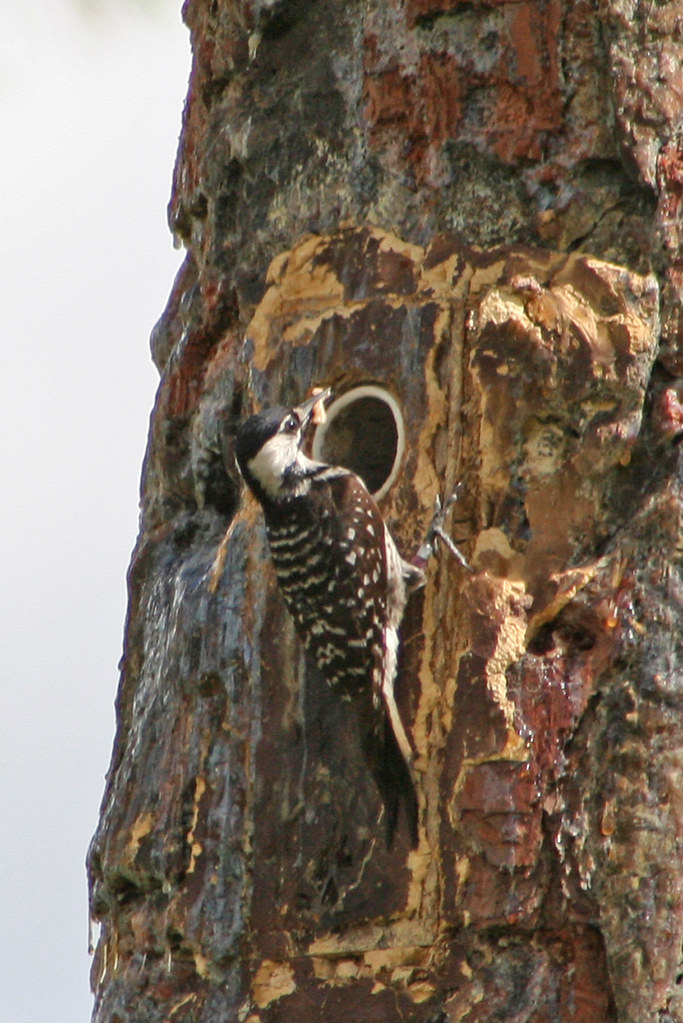
I recently defined "Endangered" as a failure to breed in sufficient quantities. That is certainly the case with Red-cockaded Woodpeckers, especially in the small isolated populations towards the periphery of their range in southern Florida. One conservation strategy to help boost these populations is translocation - stealing woodpeckers from large, healthy populations and moving them into empty clusters here, in the hope that they will establish as new pairs.
This year, our study population was slated to receive five pairs of birds from Fort Stewart, Georgia. We lucked out in receiving a ride from our commander in a small aircraft, because it would've been a marathon drive otherwise. On Thursday morning, we crammed the tiny aircraft full of ten empty Woodpecker Moving Devices, two biologists, and two pilots, and set off northward towards the Deep South.



Once on the ground in Fort Stewart, we got swished up into the huge, well-oiled operation that is their wildlife department. Our little biology station could never muster enough people or equipment to send out ten woodpecker trapping teams simultaneously! Our crew was broken up amongst the teams and sent out the door soon after the organizational meeting.
Out in the field, I got a brief taste of some real Georgia pineywoods.

My real shock came when I unfolded the map of the Fort containing all of the RCW clusters... over 400 of them! It's no wonder then that this population can be a source for little groups like ours, with less than thirty active clusters. Here there are also many more natural cavities rather than inserts. Below is much more typical of RCW trees than this insert, with lots of resin flow around the cavity.

My team waited until dusk when our cluster returned to go into roost. After some frantic minutes trying to identify the target bird and its roost, a long-handled net was placed over the cavity hole and the bird was trapped. We were going after specific birds, because only young of the year are translocated. Adults with established territories don't make good subjects for movement because they'll just leave to look for their old home.
My first RCW in the hand

Terrified RCW squeal as we check the band number



With my teams target birds in their WMDs, we waited back at base for everyone to rendezvous. The commander got to check out some baby Gopher Tortoises and other education animals the staff had on hand.


Once all ten woodpeckers were trapped and assembled, Phase 2 of translocation could begin - we all crammed back in the plane and flew back south. Sometime after midnight, we were on the ground and back at APAFR, where the rest of our bird lab was up waiting with coffee in hand. We divvied up the pairs of birds amongst the teams and went out to place them in their new clusters. Each pair gets placed in an empty cluster, with each bird getting put in its own insert. The inserts are then screened off for the night to allow the bird to settle in.
Field work by the light of the moon, circa 3am

Unfortunately, the squeals of a terrified woodpecker brought in an uninvited guest.


We shooed the Barred Owl away, and made sure the woodpeckers were securely screened inside the cavity where they were safe for the night. We also made sure no raptors lurked nearby when we returned at dawn for release. I assure you no woodpeckers were made a snack (at least not before they were flying free and out of our sight - then its not our responsibility).
Pulling on the string to yank the screen cover off

At dawn, after a mere 2 hours of sleep for our crew, we returned to all of the new clusters and yanked down the screens. The new RCWs bolted out and got adjusted to their new homes. Since each pair was actually a young male and female from different families and thus strangers, we watched to see if they would show any interest in each other. In fact, hardly anyone got the cold shoulder, and the hopefully soon-to-be new pairings moved off to forage and face the harsh new world of south Florida together.


































